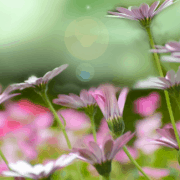13 Ways to Break the Ear Infection Cycle
Editor: Ear infections account for one-third of all visits to pediatricians and 75 percent of all follow-up visits. Studies tell us that unnecessary antibiotics, frequently demanded by parents, result in a higher recurrence of infection. Dr. William Shaw offers the following suggestions. We posted this article previously (“Ear infections: How to break the cycle or at least reduce the damage”) and it was so popular that we are reposting it now.
Breaking the Cycle
The following techniques can help break the infection/antibiotic cycle and minimize the damage. Remember: there are exceptions to every rule and antibiotics may sometimes be needed.
- Tough it out or employ watchful waiting. Use ear drops containing benzocaine and a decongestant to stop the pain.
- Eliminate milk, wheat, and other allergy-causing foods from the diet. Milk is one of the most common food allergens, often causing sinus infections leading to blockages of the Eustachian tubes and resulting in ear infections.
- Avoid cigarette or other smoking inside the house.
- [Don’t use] antibiotics for viral colds or flu since antibiotics kill only bacteria.
- If you have to use antibiotics for your child, have your doctor prescribe the antifungal drug nystatin along with the antibiotic. If your doctor won’t prescribe nystatin, give one of the natural antifungal products such as garlic, caprylic acid, or grapefruit seed extract along with the antibiotic. After antibiotics are completed, give supplements of Lactobacillus acidophilus for at least three days.
- Get a throat culture done if your child has frequent infections. There is a vaccine available for Streptococcus pneumoniae, which is the most common cause of ear infections; ask your pediatrician about it.
- Consider having one parent stay home with your child until he/she is at least two years old, and avoid preschool and daycare centers. Daycare is a breeding ground for germs.
- Breastfeed your child for as long as possible since breast milk contains antibodies against the bacteria that cause ear infections ad other infections as well.
- Echinacea is a stimulant of the immune system and is available in pediatric doses in many health food stores. This therapy is even more effective if drops of garlic and mull (also called mullein) oil are placed in the ears while the child receives the echinacea. Three days of this therapy will often clear ear infections. Echinacea works best if it is given for ten days and then discontinued for two weeks before starting again.
- [If penicillin is needed], consider asking your doctor to give your child a “shot” of rocephin in the buttocks instead of the oral penicillin. . . This will help avoid intestinal imbalance.
- If your child has four or more infections in one year, consider an evaluation of the immune system.
- Consult a heath practitioner in homeopathy. This approach was shown to be more effective than conventional antibiotic treatment in a German study of 103 children between one and 11 years.
- Consider tubes in the ear — tympanotomy tubes —when all else fails.
Condensed with permission from Biological Treatments for Autism and PDD, William Shaw, PhD, The Great Plains Laboratory
Nsouli T. “Serous otitis media and food allergy.” Clinical Pearls News 5:1, 1995.
Teele, D et al. “Epidemiology of otitis media during the first seven years of life in greater Boston: a prospective cohort study.” J Infec Dis 160:83-94, 1989.
Williams E. “Breast feeding attitudes and knowledge of pediatricians in training.” Am J Prev Med 11:26-33, 1995.










